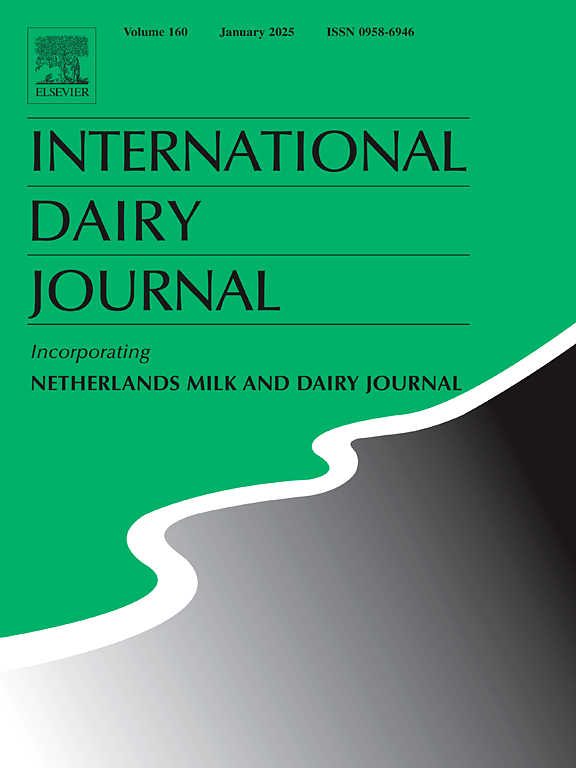Formulation and production of processed cheese without using emulsifying salts
IF 3.1
3区 农林科学
Q2 FOOD SCIENCE & TECHNOLOGY
引用次数: 0
Abstract
Processed cheeses are produced with emulsifying salts to obtain a homogeneous structure. However, emulsifying salts are food additives with high sodium content that can affect health adversely. This study aimed to formulate and produce a block-type processed cheese without using emulsifying salts. An acid casein source, strained yoghurt, was used along with milk protein concentrate (MPC70) and whey protein concentrate (WPC70) with 70% protein in dry matter in the formulation. Three different formulations were developed using a basic formula including cheese, unsalted butter and water with different amounts of MPC70 and WPC70 (1:0, 1:1, 0:1). Physical, functional and sensory properties of the cheeses were compared. While the sample with only MPC70 had the highest hardness, springiness and cohesiveness, addition of WPC70 adversely affected these properties resulting in a gritty and crumbly texture. The sample with only WPC70 did not show melting and oiling off. The sample with only MPC70 was also found to be the closest one to a commercial processed cheese in terms of sensory texture and flavour. Use of strained yoghurt and MPC70 in the formulation yielded a processed cheese with acceptable physical and sensory properties and a low salt content.
不使用乳化盐的加工奶酪的配方和生产
加工奶酪是用乳化盐生产的,以获得均匀的结构。然而,乳化盐是钠含量高的食品添加剂,会对健康产生不利影响。本研究旨在配制和生产块状加工奶酪,而不使用乳化盐。以酸性酪蛋白为原料,与干物质蛋白质含量为70%的乳蛋白浓缩物(MPC70)和乳清蛋白浓缩物(WPC70)混合使用。使用奶酪、无盐黄油和水的基本配方开发了三种不同的配方,其中MPC70和WPC70的含量不同(1:0、1:1和0:1)。比较了两种奶酪的物理、功能和感官特性。虽然只添加MPC70的样品具有最高的硬度、弹性和黏结性,但添加WPC70对这些性能产生不利影响,导致颗粒状和易碎的纹理。只加入WPC70的样品没有熔化和脱油现象。仅含有MPC70的样品也被发现在感官质地和风味方面最接近商业加工奶酪。在配方中使用过滤酸奶和MPC70,生产出具有可接受的物理和感官特性和低盐含量的加工奶酪。
本文章由计算机程序翻译,如有差异,请以英文原文为准。
求助全文
约1分钟内获得全文
求助全文
来源期刊

International Dairy Journal
工程技术-食品科技
CiteScore
6.50
自引率
9.70%
发文量
200
审稿时长
49 days
期刊介绍:
The International Dairy Journal publishes significant advancements in dairy science and technology in the form of research articles and critical reviews that are of relevance to the broader international dairy community. Within this scope, research on the science and technology of milk and dairy products and the nutritional and health aspects of dairy foods are included; the journal pays particular attention to applied research and its interface with the dairy industry.
The journal''s coverage includes the following, where directly applicable to dairy science and technology:
• Chemistry and physico-chemical properties of milk constituents
• Microbiology, food safety, enzymology, biotechnology
• Processing and engineering
• Emulsion science, food structure, and texture
• Raw material quality and effect on relevant products
• Flavour and off-flavour development
• Technological functionality and applications of dairy ingredients
• Sensory and consumer sciences
• Nutrition and substantiation of human health implications of milk components or dairy products
International Dairy Journal does not publish papers related to milk production, animal health and other aspects of on-farm milk production unless there is a clear relationship to dairy technology, human health or final product quality.
 求助内容:
求助内容: 应助结果提醒方式:
应助结果提醒方式:


